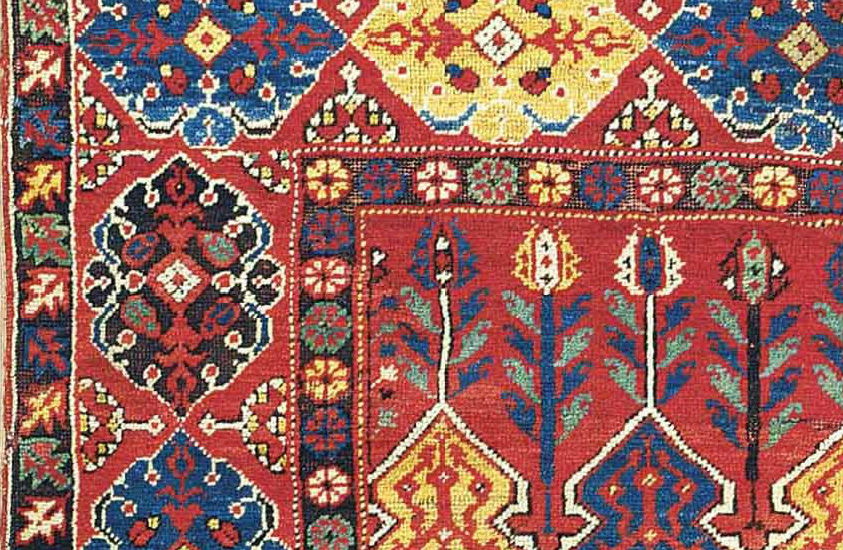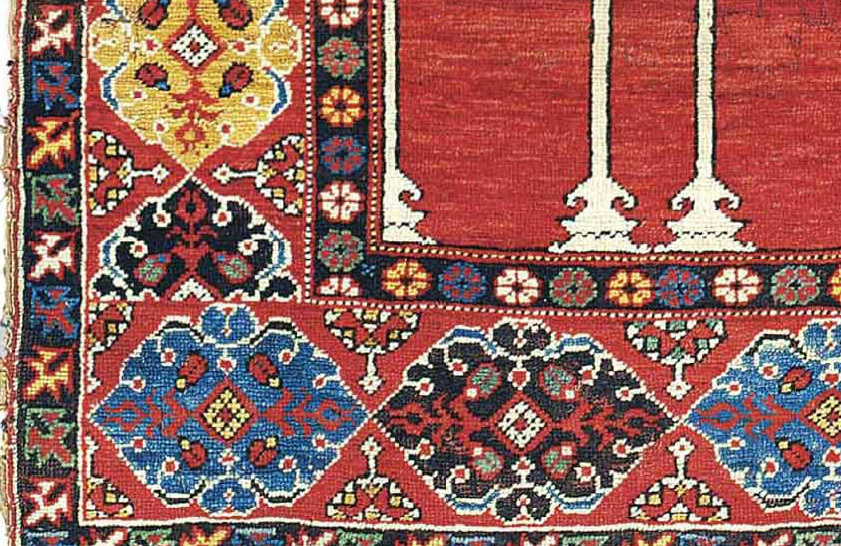THE BERNHEIMER COUPLED-COLUMN PRAYER RUG WEST ANATOLIA, MID 17TH CENTURY
Price Realized £116,500 ($193,507)
Sale Information
Christies SALE 1519 —
ORIENTAL RUGS & CARPETS
8
April 2014
London, King Street
LOT NOTES
Lot Description
THE BERNHEIMER COUPLED-COLUMN PRAYER RUG
WEST ANATOLIA, MID 17TH
CENTURY
Virtually full pile throughout, localised spots of moth damage,
a small repair, selvages partially missing, overall very good condition.
5ft.1in. x 3ft.7in. (155cm. x 108cm.)
Provenance
With Otto
Bernheimer by 1959
Literature
Otto Bernheimer, Alte Teppiche des
16. Bis 18 Jahrhunderts der Firma L. Bernheimer, Munich, 1959, bild. 52 in
black and white
Friedrich Spuhler, Hans Konig and Martin Volkmann, Old
Eastern Carpets: Masterpieces in German Private Collections, Munich, 1978,
pl.15, pp.58-59
Charles Grant Ellis, Oriental Carpets in the
Philadelphia Museum of Art, Philadelphia, 1988, fig. 34a, p.103
Hali
Vol. I, No. 3, Autumn 1978, Review of the Bernheimer Exhibition, p.300 in
black and white
Hali Vol. II, No. I, Spring 1979, Walter B. Denny,
‘The Origin of the Designs of Ottoman Court Carpets’, pl.1 in colour and
p.11 in black and white
Exhibited
Alte Orientteppiche, Staatliche
Museum für Völkerkunde, Munich, 1978
Lot Notes
Anatolian
coupled-column prayer rugs are an exceptional group of Ottoman court rugs,
characterised by their elegant proportions and effortless melding of
delicate architectural details and stylised floral elements. In her
oft-cited article ‘Coupled-column Prayer Rugs’, May Beattie discusses the
development of the design of this small group and traces their origins
back to the great 16th century court rugs such as the Ballard Prayer Rug
in the Metropolitan Museum (‘Coupled-column Prayer Rugs’, Oriental Art,
New Series, vol.XIV, no.4, Winter 1968, pp.243-258). A root that seems to
be backed up by the discovery in the late 1970s of a Cairene carpet of
Mamluk design, with panels at either end of crenellations and tulips,
Walter B. Denny, ‘The Origin of the Designs of Ottoman Court Carpets’,
Hali Vol. II, No. I, Spring 1979, p.6.
Our rug relates closely to a
number of coupled-columned prayer rugs illustrated in Stefano Ionescu,
Antique Ottoman Rugs In Transylvania, Rome, 2005, pp.162-163 but in
particular cat. 201, a beautiful example from the Black Church, Brasov,
inv. no. 227. The present example and the Black Church rug have very
similar proportions, palette and drawing, with the exception of the
capitals of the columns. However, the condition and colours of our prayer
rug are quite exceptional. In this respect the present rug most closely
relates to the prayer rug formerly in the collection of Emil Schmutzler,
which also has articulated capitals (Stefano Ionescu, ibid., Rome 2005,
cat.197, p.162).
The dating of these rugs has in the past varied
greatly, but is helped by Nicolaes van Gelder’s inclusion of a
coupled-column prayer rug of this group in his 1664 painting, Sill Life,
now in the Rijks Museum, Amsterdam. In this almost photo-naturalistic
painting, in spite of the abundance of fruit and flowers placed on top of
the rug, the bold cartouche border, side column and arabesque spandrel
design is unmistakable. The present lot is a superlative example of this
group.
|




